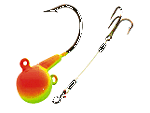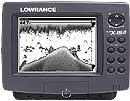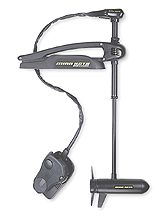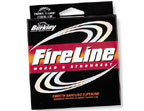
Church Tackles Mr. Walleye
Planer Board

Click
here for more info or to order on-line













Promotional
Team Favorites
Lodging food and more






Mark
Martins
Lake
Superior Beachfront home for rent



|
Two-Timing Walleyes
In fall, I follow a pattern that mirrors the predictability of the walleyes.
It goes like this: jig moderate depths most of the day; cast or troll minnowbaits
in the last hour or two before dark and on into the night.
Sound straight forward enough? You bet it is. Although other patterns
exist say, plumbing the depths with lead-core line‹I like to keep it simple
everywhere from the natural lakes of the North Country to the big water
of Lake Erie and the rest of the Great Lakes. This is the time of year
when walleyes are primed to feed before winter, focusing on minnow-related
prey.
That's precisely why I do the same, working live bait or plastic minnows
on
jigs during the light of day, then casting jerkbaits and trolling slim-minnow
imitations once the witching hour arrives. The way I look at it, it's a
recipe for destruction.
Bigger Bait, Live or Fake

Northland
Fire-Ball. Jig |
Grab a handful of Northland
Fire-Ball. Jigs and a bucket of shiners and chubs and you¹re partway
there. To complement a live-bait approach, I¹ll stock up on Berkley
Power Minnows and long-shank Northland jigs‹an option for when walleyes
are really popping or when they¹re really not. |

Berkley
Power Minnow |
By that I mean that plastic minnows jigged a little faster work great
when fish are highly aggressive or rather neutral. Sometimes the neutral
ones respond to a little
more speed than to standard jigging with bait. Try some of each to
find what's working. One new offering from Berkley is an assortment of
bulked-up four-inch minnows‹new additions beyond the standard three-inchers‹that
mimic the bigger baitfish of fall. |
When picking out prime areas, I look for points, humps, weeds and flats
near
deep water. During the daytime, I'll slide off the edges of them, starting
at the break and working deeper.

Lowrance’s
new X-15 |
Quality electronics, such as the Lowrance liquid-crystal units, will
pinpoint both bait and fish‹pretty fine starting points by me. Another
asset for such areas is a fairly steep break, which gives the fish the
ability to hang out on mud or rock bottom for most of the day and climb
into the shallows to chow down as evening approaches. |

Minnkota 101 |
Typically I'll control my drift with a bowmount Minn Kota trolling
motor, jigging vertically with sizable minnows (just what walleyes are
looking for in fall). I pay attention to when I feel the minnow struggling‹a
tip-off predators are in the area. With plastics such as Power Minnows,
I'll pitch out and snap them back with a lift-and-drop retrieve or work
them right
below the boat, hopping them six to 10 inches off bottom. If the wind's
an issue, consider investing in Trojan deep-cycle batteries, which have
the
staying power in the gusts of fall, teamed with an easy-to-open, easy-to-retrieve
drift sock from JNB Originals. |
The sock, along with the long-lasting batteries, will keep you from speeding
too fast even in the gales of October and November.
Prime depths depend mostly on water clarity. If the lake has a little
stain, I can catch fish jigging with bait or plastic between about 12 and
18 feet. If it's pretty clear, I'll go deeper, as deep as 30 feet. Here
it's important to watch for fish on electronics. Remember, the deeper you
get, the easier it is to see bthem‹particularly in depths in excess of
15 feet. One solid strategy for finding fish is to check out a Fishing
Hot Spots map and to look for the most prominent structure on the lake.
Then I take a closer look to find where the contour lines are closest,
an indication of steeper drops. That¹s the key area to key in on,
and it¹s the fastest way to find fall walleyes.
The Boatside Bash
For all the excellent fall fishing in the depths during the daytime,
I know when to say when‹that is, when to slide shallower when the sun nears
the top of the trees. Like clockwork, walleyes move in farther and are
even more aggressive. That makes them perfect targets for minnowbaits.
My favorites are Rapala Husky Jerks, suspending baits that dive when
retrieved and stay put, hovering at the same depth, when stopped. In fall,
I seldom use anything smaller than a No. 10, usually going larger with
a No. 12 or No. 14, even if the fish aren¹t all that large. The reason
is that autumn walleyes key in on large baits. It¹s that simple. A
trick, though, is to add a strip of tape of reflective tape from WTP Inc.
to the bait¹s side. I was sold when I watched minnows flash in a fish
tank in low light; I was sold even more so when I tried the tape long ago
and caught more walleyes than other anglers in my boat without it.
To work the five- to 12-foot depth profile, I whip out a Husky Jerk,
crank
to get it down and stop. If you¹re around walleyes, you sometimes
can let it
sit until you get bit. If you don¹t get one to hit the bait, twitch
it once, twice or three times and stop. Repeat all the way back to the
boat. Warning: Big walleyes will often smack a jerkbait when it¹s
a foot from the boat. That's a riot.
 |
In this instance, keep a loose drag so walleyes don't come unbuttoned
on a short line. I put Berkley 6-pound FireLine, a thin-diameter superline,
on my Mitchell reels. The reels cast great, eliminating twists and snarls
from the line, and offer a smooth drag to help offset the boatside bash. |

Original Rapala |
My other favorite technique, although it¹s not as up close and
personal, is to troll Original Rapala Floaters
with an electric motor. When I'm 10 feet
or less during the evening or after dark, I seldom add weight to a
No. 13 Rap, the perfect size in fall. |
(I just make sure I add reflective tape and a ring of glow paint around
the tail and head of the bait, then attach the Rapala with a Berkley Cross-Lok
snap to allow the bait to wobble.) 'I'll let the lure out 80 to 120 feet
and tune in the trolling motor at a speed just fast enough to make the
lure wobble. Now you¹re in business. The Rapala is buoyant enough
to stay above weeds or rocks. If you¹re smacking bottom too often
or snarling in weeds, bring the Rap in 20 feet at a time until it's running
free. It's often difficult to run a bait too high above the fish,
since they¹ll rise up to smack it. The distance behind the boat
simply provides a little cushion between you and the fish to minimize spooking.
With all the techniques out there and all the options that exist when
fish are scattered from shallow to deep in summertime, jigging and working
minnowbaits are refreshing returns to simplicity. After all, when the walleye's
patterns are downright predictable, it makes the most sense to mirror their
patterns with minnow imitations out deeper during daylight and in shallower
when the light wanes. Well, what are you waiting for?

Fish
Clix Banner Exchange
Walleyes Inc. website is maintained
by Randy
Tyler Fishing the In-Fisherman Professional Walleye Circuit, Masters
Walleye Circuit and the Team Walleye Circuit. All rights reserved.Copyright
1999/2002
Please visit these site sponsors
Daiichi/Tru-Turn Hooks,
Lindy
Little Joe,
R-A.M Mounting Systems,
Ranger
boats, Mercury Outboards,
Bedford
Sales , Church Tackle, Panther
Marine Products,
Webfoots body
sock, Bait Rigs Tackle ,Dual
Pro Charging Systems, Daiwa Rods and
Reels, Driftcontrol Wind socks,
Trojan
Batteries
|







